I was about to file a query to Samsung Support. To ask better questions, I re-study the webpage again, and I came across this post having the table below:

In the row of "Sub-Pixels Per Inch", we can see that only green pixels are having 432 ppi. Both red and blue pixels are at only 305 ppi.
Doing a few maths:
$$
Closest\ (inclined)\ distance\ between\ red\ pixels = \sqrt{(118µm/2)^2 + (118µm/2)^2} = 83.439 µm
$$
$$
83.439 µm = 0.00328498426 inches
$$
$$
PPI_{red} = PPI_{blue} = \frac{1}{0.00328498426 inches} = 304.415 ppi \approx 305 ppi
$$
This table verifies our PPI calculations and definition. According to these figures, pixel distance that is used to calculate the PPI should have been defined as the closest distance between two dots of the same colour, which can be independently turned on and off.
Is Samsung being tricky? Not exactly.
When I do more researches on S5, so as S4 as they have similar diagonal PenTile RGBG matrix (same pattern, different size and sub-pixel shape only, see the webpage), I got this from wiki:
PenTile RGBG layout used in AMOLED and Plasma displays uses green pixels interleaved with alternating red and blue pixels. The human eye is most sensitive to green, especially for high resolution luminance information. The green subpixels are mapped to input pixels on a one to one basis. The red and blue subpixels are subsampled, reconstructing the chroma signal at a lower resolution. The luminance signal is processed using adaptive subpixel rendering filters to optimize reconstruction of high spatial frequencies from the input image, wherein the green subpixels provides the majority of the reconstruction. The red and blue subpixels are capable of reconstructing the horizontal and vertical spatial frequencies, but not the highest of the diagonal. Diagonal high spatial frequency information in the red and blue channels of the input image are transferred to the green subpixels for image reconstruction. Thus the RG-BG scheme creates a color display with one third fewer subpixels than a traditional RGB-RGB scheme but with the same measured luminance display resolution. This is similar to the Bayer filter commonly used in digital cameras.
So, we have a few conclusions:
The structure and dimensions in the oled-display.net news (it means the image in the question) are correct.
Yes. S5 AMOLED display does having less than 432 ppi if we focus on red or blue sub-pixels. (They are of 305 ppi only.)
However, according to wiki, the perception of resolution depends mainly on the green sub-pixels. So it is having 432 ppi on real-life images. (I believe for pure red and/or blue images, it has only 305 ppi diagonally.)
Digital images are displayed at 432 ppi, as they are mapped to the green sub-pixels on a 1-to-1 basis. The red and blue sub-pixels are complements.
A side note:
In the last sentence in wiki mentioned our familiar cameras' Bayer filter. After re-studying again:
The raw output of Bayer-filter cameras is referred to as a Bayer pattern image. Since each pixel is filtered to record only one of three colors, the data from each pixel cannot fully specify each of the red, green, and blue values on its own. To obtain a full-color image, various demosaicing algorithms can be used to interpolate a set of complete red, green, and blue values for each pixel. These algorithms make use of the surrounding pixels of the corresponding colors to estimate the values for a particular pixel.
which means the image below is a 8 x 8 pixel sensor (instead of a 4 x 4 or else).



